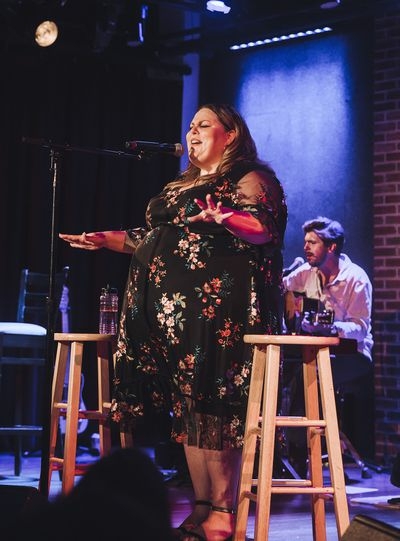In the 1970s and 80s, dance music was born from minorities—the LGBTQ+ communities and Black and Brown people in Chicago, New York, and Detroit—as a means of escapism and freedom from a world that wasn’t built for them. The disenfranchised created a microcosm to express themselves and feel safe. However, if you look at top-tier DJs and festival lineups in the UK in 2022, this is not the case. Calvin Harris, Fatboy Slim, David Guetta – white men dominate the modern electronic scene and mirror the world we live in, and those who are not part of the canon face many challenges.
My report, Progressing Gender Representation in UK Dance Music, is a deep dive into the gender gap amongst artists within the UK electronic music scene. The seeds for the report were sown during the pandemic when I became a DJ without gigs. During a period of reflection, inspired by the Black Lives Matter protests, I questioned what I really wanted with my career.
I found my purpose. In my BBC Radio 1 shows, championing minorities was already a priority, but I wanted to do more to make British dance music a more equal place for the next generation. In 2020, I launched Future1000 with Virtuoso, a free, online initiative where women, trans and non-binary people aged 12 to 18 can learn to DJ, in an accessible way. While researching the report, I couldn’t find many official resources with data on gender in dance music, so the Jaguar Foundation was born and we decided to create our own research and provide solutions to gender inequality.
Through interviews with UK dance music artists, industry heavyweights and those already lobbying for change in this area, we have put together a powerful narrative of what the challenges are and what we can do to accelerate existing progress. This was supported by lots of data analysis looking at festival lineups, radio airplay and the gender of club night ticket buyers.
The findings show a lack of diversity in dance music’s live ecosystem, both on lineups and behind the scenes, and how women and – even more so – trans and non-binary people are being victimized for not fitting in with the “boys’ club”. To me, the most shocking results were linked to more mainstream representation. When we analyzed data from the Official Charts Company, only 5% of dance songs were made entirely by women and non-binary artists. On the radio – and it breaks my heart – it was 1%. And when it comes to electronic festival lineups in 2022, we found that only 28% of artists are female or non-binary; at larger festivals that shrinks to 15%. How many of these women or non-binary people are the main names? Hardly anyone – just look at the big festival lineups this summer, where big male headliners still dominate.
One solution we provide in the report is that of the inclusivity rider: a booking contract clause that says the artist will only play on a lineup if there is at least one other woman, trans or non-binary person, or person of color playing. next to them. If everyone had one, especially dominant male DJs, we would see accelerated change. The big male DJs would still be booked, but the lineup will be more diverse. Different lineups lead to diverse audiences; statistics show that ticket buyers reflect who is on the bill.
An inclusive rider is also important when it comes to safety for women and non-binary people. As a DJ, you travel around at unsociable hours, often alone. Not everyone has a tour guide, booking agent or someone to accompany them. I have been in situations where I have felt uncomfortable when I travel. I know a DJ whose drink was spiked in the green room at their own show. In the report, DJ Ifeoluwa talks about being beaten in a club. They reported it to the bouncer who did nothing. Many of the women and non-binary DJs we spoke to experienced men jumping into the booth and starting to play with their mixers. Now, some of these artists have a safety clause in their contract that says no one can be behind the decks during their sets.
There are also other challenges for women and non-binary people, such as the added pressure of how they look. All too often I have read comments that refer to the success of some female DJs as being due to their attractiveness. I have friends who dress androgynously when they DJ – or do something front-facing – because they are afraid of over-sexualizing themselves and being judged. During a DJ live stream, my friend wasn’t wearing a bra and all the comments were about her nipples, rather than her performance. It negatively affected her mental health and self-confidence. It’s exhausting having to fight through all of this every day. When I did my first Boiler Room session this year, I was so nervous – not about the gig, but what trolls would say in the comments.
I hope that Progressing Gender Representation in UK Dance Music will be a starting point to bring about positive change. I would love for CEOs of record labels, venues or booking agencies to read it and start questioning everything, especially the male gatekeepers in our industry. Ask yourself: are the actions on my list different? Am I doing enough to welcome minorities? Are the women and non-binary colleagues treated with respect? I need you to really look in, acknowledge the results, start over if you have to, and do the work.
So let’s keep talking and keep progressing. Let’s open minds and let’s open doors to those who have previously felt isolated. I hope that women, trans people, and non-binary people feel empowered by this report, but know that this is just the beginning. I will keep building the data, keep reviewing, and keep pushing for what everyone deserves: equality. At the end of my career, in the coming years, I would like this report to be no longer necessary.



